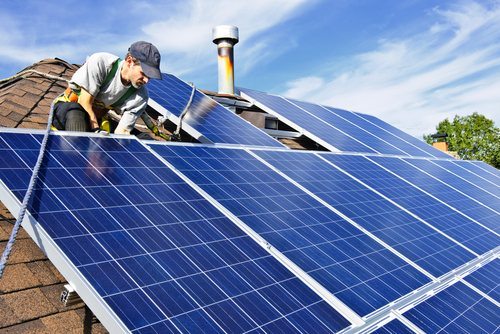Nearly 7,000 solar industry jobs stand to be lost or foregone if the Abbott government decides to abolish Australia’s Renewable Energy Target (RET), a new study has found.
The analysis, released by the REC Agents Association (RAA) on Wednesday, finds that up to 6,750 solar PV jobs could be lost and foregone nationwide by 2018 if the federal government axed the RET – something the industry group says Tony Abbott’s Coalition is considering, despite the party’s repeated claims it supports the current 20 per cent by 2020 target.
Australia’s solar industry, while relatively new, has become a major employer across a wide variety of direct and indirect industries. In 2012, it was estimated to have employed more than 23,500 Australians and grew its employment rate by 51% compared to the previous year.
In 2013, however, after the removal of state and federal incentives, the PV market declined 22 per cent and the solar hot water market declined 20 per cent, leading to the loss of 5,800 jobs from a peak of 23,500 direct and indirect jobs in 2012.
And while similar industry job losses have been predicted for this year, the RAA report finds that, with an unchanged RET, this trend would soon be reversed, with a potential 8,000 additional solar PV jobs created between 2014 and 2018 under a business-as-usual scenario.
Under a scenario where the RET is scrapped, however, the analysis finds that 2,000 direct and indirect solar PV jobs could go next year, with another 1,000 to follow over the following three years.
A similar 30 per cent decline in solar hot water jobs could lead to the loss of over 300 jobs in that industry, says the report, while many solar hot water and PV retailers and installer companies would close down.
Downsizing the RET would also have serious consequences for the industry, the report finds, potentially costing it as much as 600 jobs in the first year.
 “Axing the RET is on the government’s agenda and they need to understand this would have a diabolical impact on jobs, industry and the hundreds of thousands of Australians who want to put solar on their homes,” said Fiona O’Hehir, Vice-President of RAA and CEO of Greenbank Environmental, who commissioned the report.
“Axing the RET is on the government’s agenda and they need to understand this would have a diabolical impact on jobs, industry and the hundreds of thousands of Australians who want to put solar on their homes,” said Fiona O’Hehir, Vice-President of RAA and CEO of Greenbank Environmental, who commissioned the report.
As it stands, the Abbott government has opted to undertake (yet another) RET review, for which it has yet to release the terms of reference, despite having committed to do so by early December.
As we reported yesterday, however, the outcome of this RET review does not bode well for the renewables industry, with rumours out of Canberra suggesting the Abbott government will name Alan Moran, an anti-renewable zealot from the Institute of Public Affairs, to the panel.
For Australia’s solar industry, things are looking particularly grim, with growing speculation that the small scale renewable certificate may be cut in a revamp of the national renewable energy target.
This speculation is largely based on the Conservative state governments’ habit of attributing rising electricity bills to the cost of solar subsidies. But the reality is, the small scale scheme adds very little to electricity bills, less than one per cent, according to official data, and the Climate Change Authority, which reviewed the RET in 2012.
As the RAA report notes, “by 2015, the Small-scale Renewable Energy Scheme (SRES) – a key part of the RET that helps Australian families install solar – will cost just $6.50 out of an average $500 a quarter power bill, but the cost is sharply reduced by the parallel reduction in the wholesale cost of electricity delivered by solar.”
The real cost of the SRES to households, it says, is just $1.90 per quarter, or just 0.38 per cent of a typical household quarterly bill. Meanwhile, for almost 5 million Australians, solar is substantially reducing their power bills.











